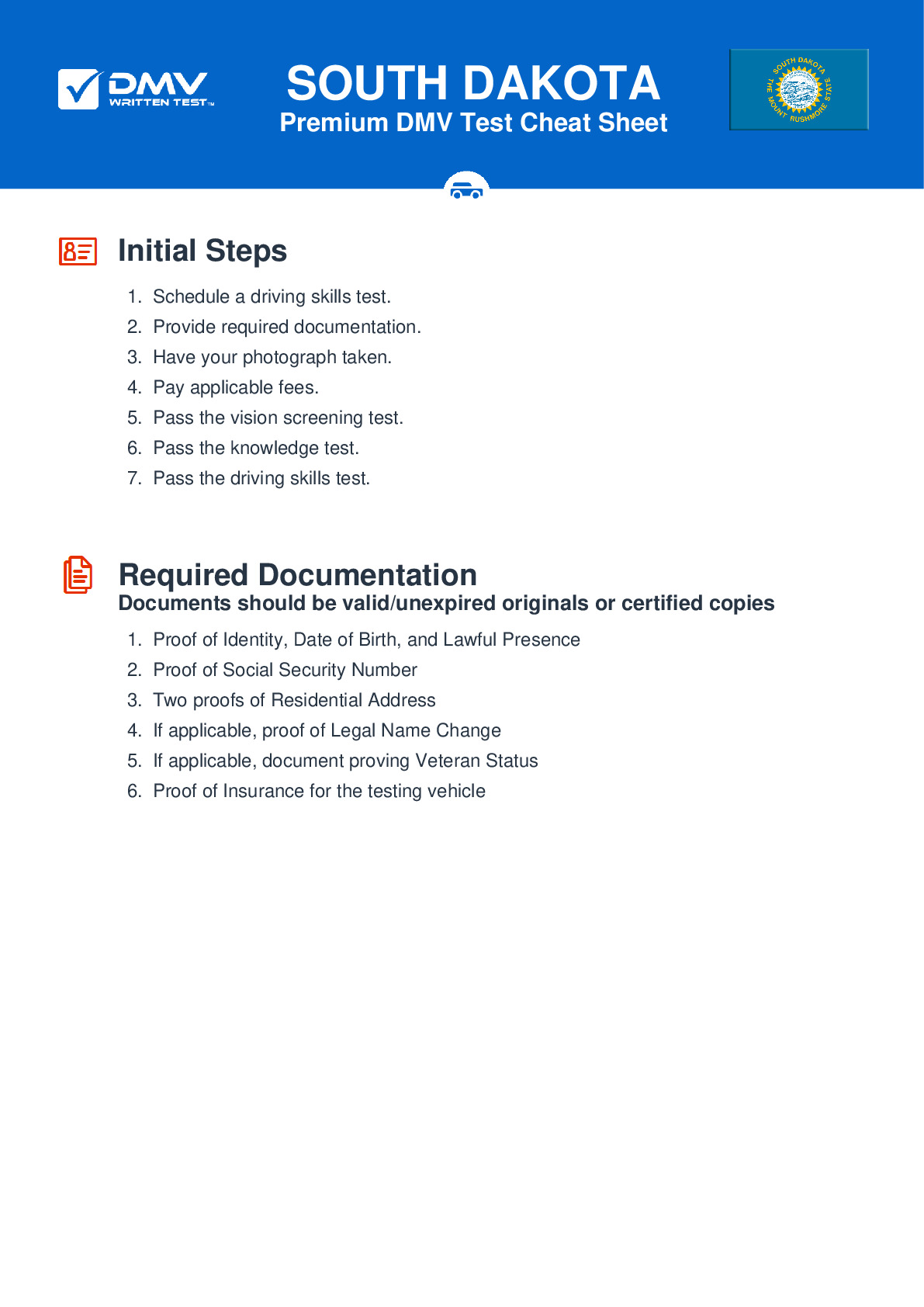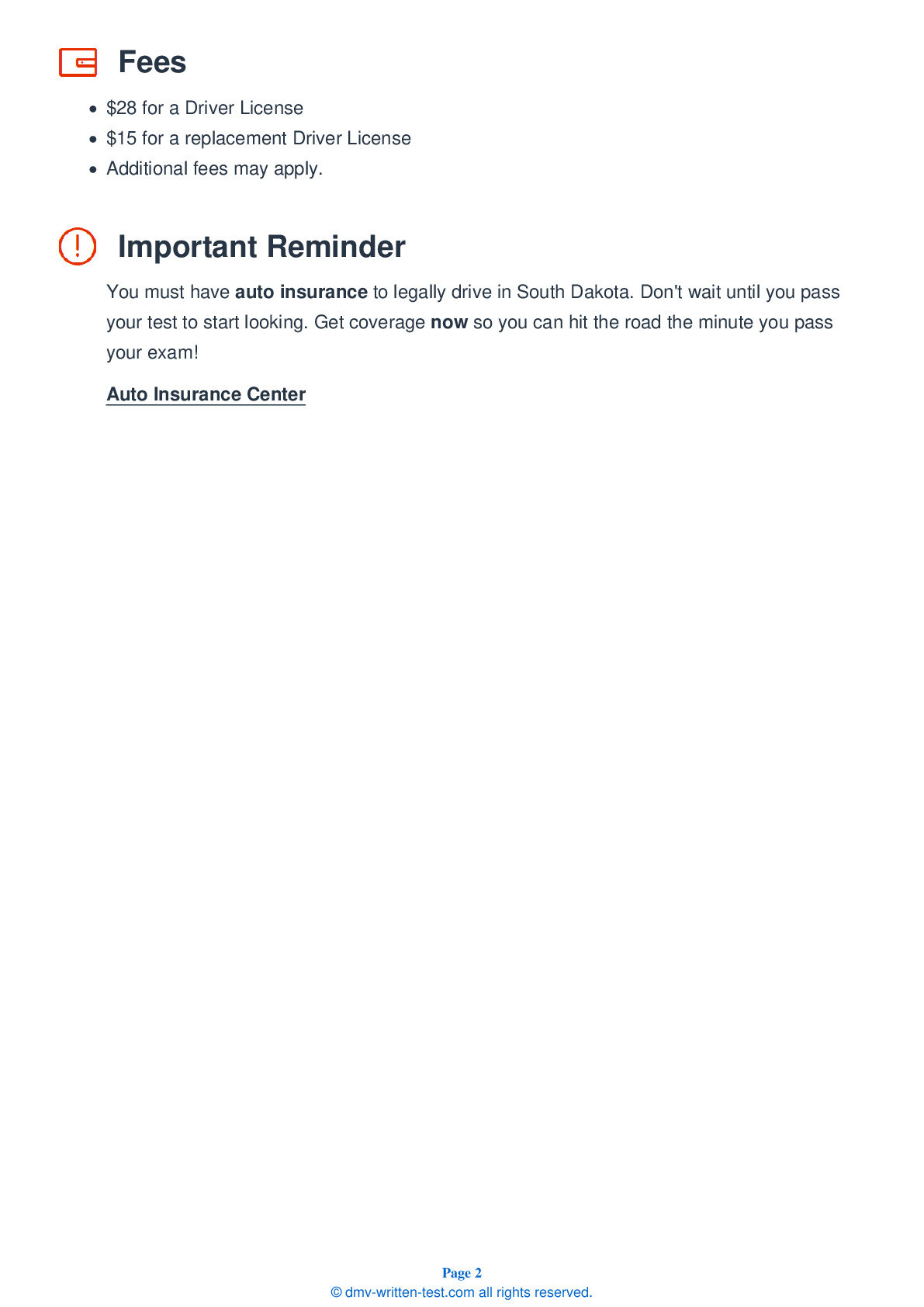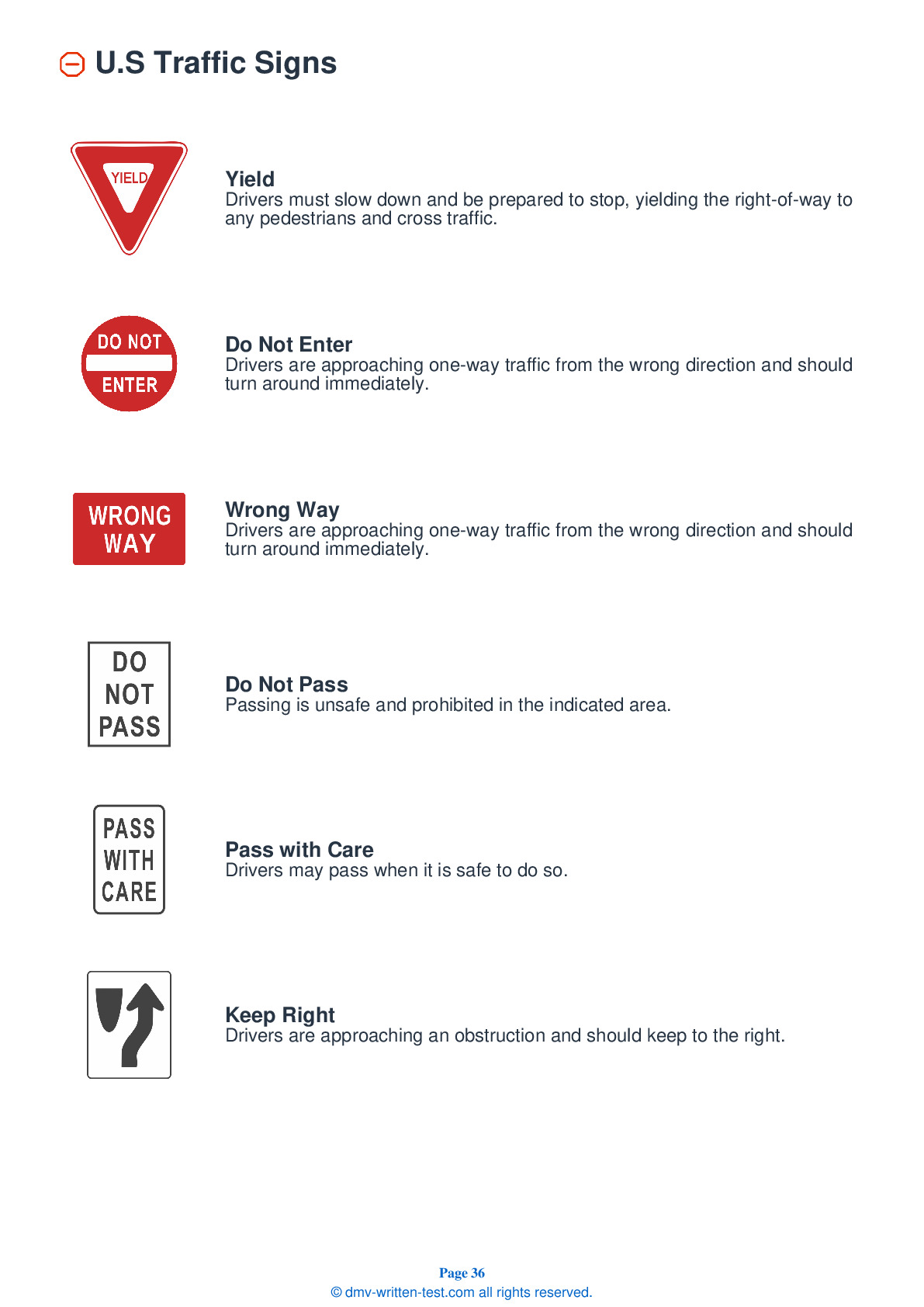2025 South Dakota Permit Test 21
The following questions are from real DMV written tests. These are some of the actual permit questions you will face in South Dakota. Each permit practice test question has three answer choices. Select one answer for each question and select "grade this section." You can find this button at the bottom of the drivers license quiz. For a complete list of questions and answers for South Dakota please visit https://cheat-sheets.dmv-written-test.com/en/south-dakota/car.
Number of Tests
Number of Question
Passing Score
1. There are oncoming vehicles to your left and a row of parked vehicles to your right. You should steer:
Explanation
If there are oncoming vehicles to your left and a row of parked vehicles to your right, the best thing to do is to split the difference. Steer a middle course between the oncoming cars and the parked cars.
2. When passing, you should move back into the right lane when:
Explanation
Do not pass unless you have enough space to return to the driving lane. Before you return to the driving lane, be sure you have enough room between yourself and the vehicle you have passed. When you can see both headlights of the passed vehicle in your rearview mirror, it is safe to return to the driving lane.
3. When you see this sign, you:

Explanation
This sign indicates that you are approaching a railroad crossing. You must look, listen, slow down, and prepare to stop. Wait for any trains to pass before you proceed.
4. If you approach a traffic light with a red signal and a police officer directs you to go through the intersection without stopping, you should:
Explanation
Instructions given by police officers directing traffic always override posted traffic signals and signs. Follow the officer's instructions.
5. If you parallel park facing downward on a hill:
Explanation
When parking downhill, turn your front wheels toward the curb or edge of the road. When parking uphill on a road without a curb, turn your wheels toward the edge of the road. When parking uphill on a road with a curb, you must turn your front wheels away from the curb.
6. When crossing a sidewalk to enter traffic from an alley or driveway, drivers should:
Explanation
When leaving an alley, driveway, or parking lot to enter a roadway, you must stop before driving onto a sidewalk or sidewalk area. Pedestrians and existing traffic have the right-of-way.
7. When should you yield your legal right-of-way?
Explanation
Never assume other drivers will give you the right-of-way. Yield your right-of-way whenever it helps prevent collisions.
8. Give the right-of-way to any pedestrian who is:
Explanation




